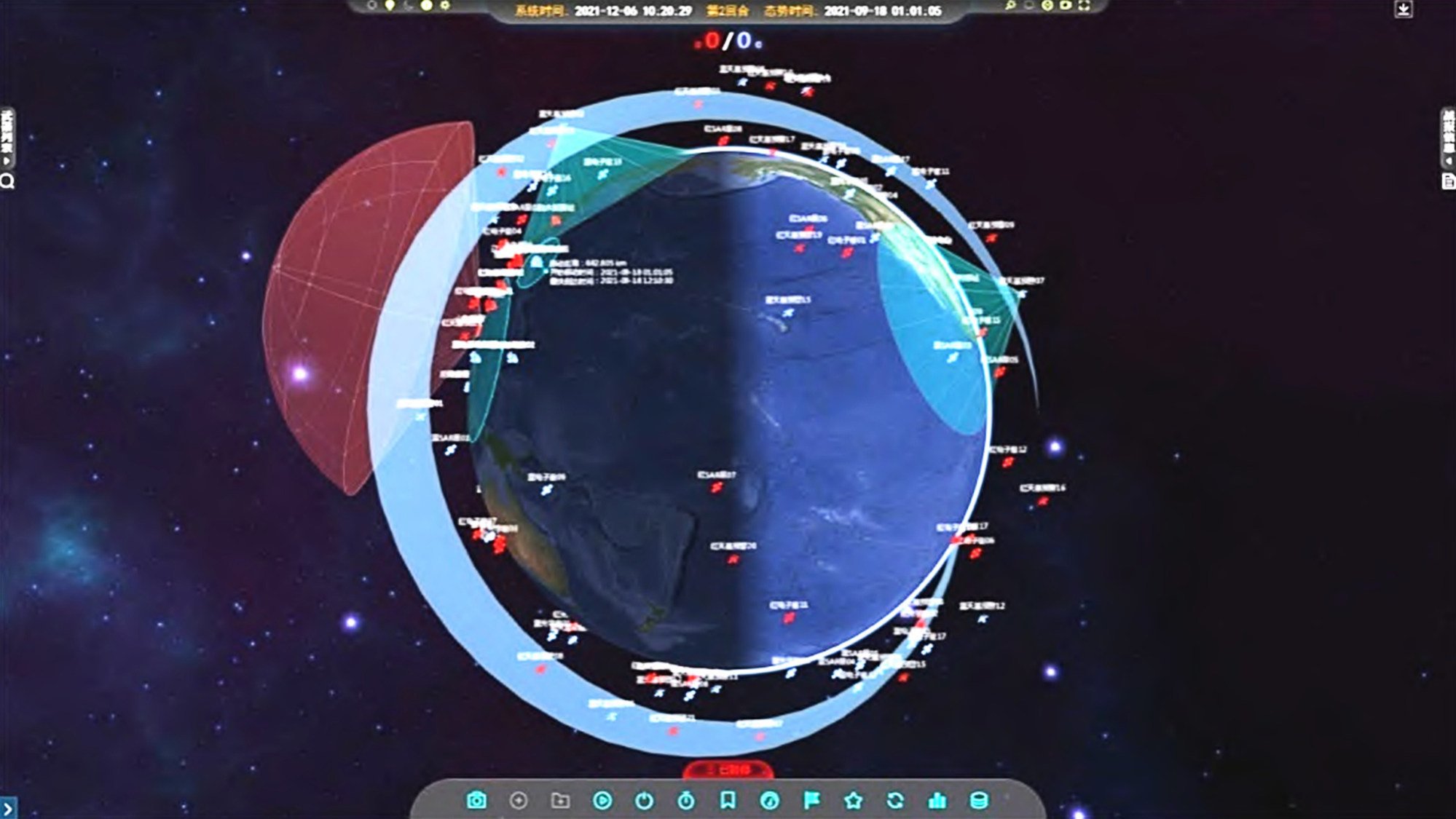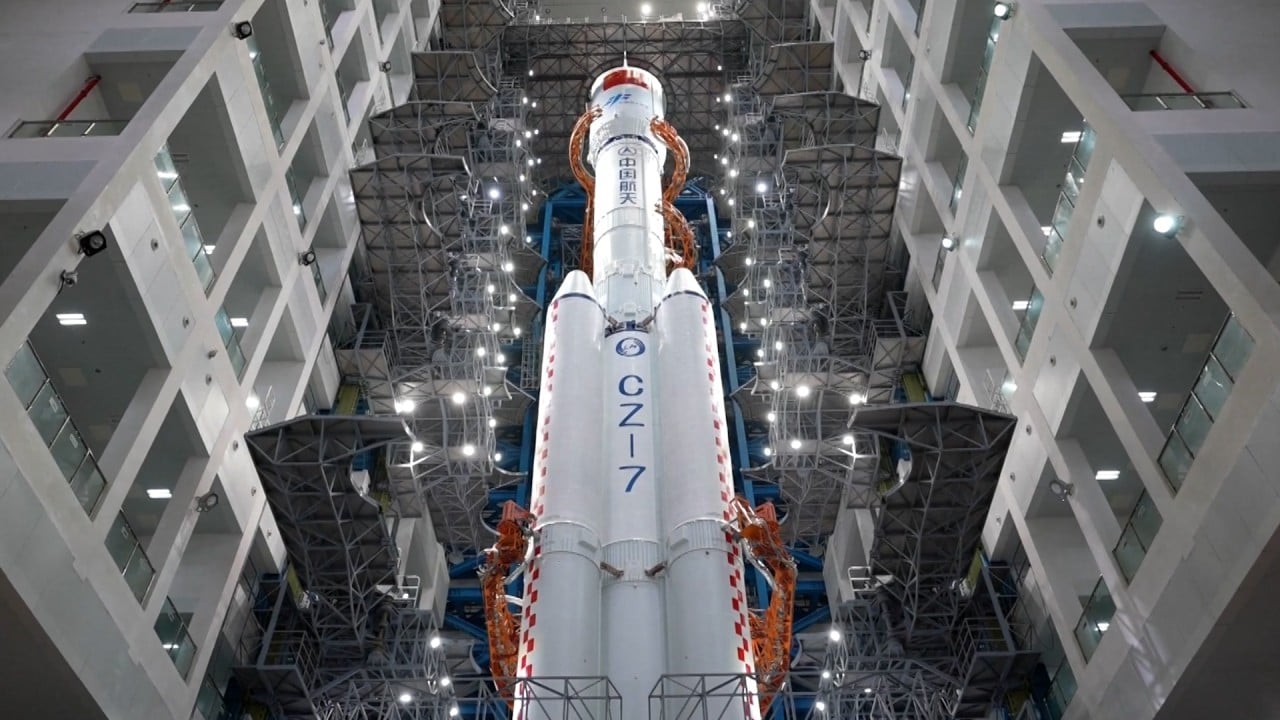
China unveils space war-gaming system for military operations and training
- Beijing says it does not want a space war, but new tech, previously shrouded in secrecy, helps prepare troops for futuristic battles – just in case
- More than 400 military cadets take part in two-month-long competition, giving them a chance to fight in mock skirmishes and wield advanced weapons
With a “user-friendly” design, the system has the power to simulate and foresee the intricate process of space combat, according to its developers.
Developed by the National University of Defence Technology in Changsha, the system has already proved its worth in a covert space mission, the team led by associate professor Zhang Jin wrote in a paper published in domestic journal National Defence Technology in October.
“We were all thrilled,” one trainee said in Zhang’s paper.
The official stance of the Chinese government aligns with that of most countries worldwide, which is a firm opposition to any form of space warfare.
While the resolution attracted overwhelming support, there were opponents, with Washington and its cohorts voicing the loudest disapproval.
Planes would be blinded, ships would be lost at sea, there would be mayhem in cities and remote communities would be cut off from the world. Services that we take for granted in day-to-day life, such as weather forecasts or live international sports broadcasts, could be disrupted.
“Actions taken directly against satellites are seen by some as tantamount to igniting a nuclear war,” the team wrote in the paper.

The space war game developed by Zhang’s team is fundamentally different from any war-gaming system previously used by the People’s Liberation Army (PLA).
One of the most notable features of the system is that it can make the Earth transparent in the operation interface, meaning users in the eastern hemisphere can clearly observe situations in the western hemisphere in real time.
In the conventional realm of war-gaming, military units typically assault neighbouring enemy targets, with even the longest-range missiles confined by their specific limits. However, in space warfare, a satellite can circle the Earth multiple times in a short period. Tactics that once proved effective in traditional warfare might be futile or even detrimental in space, according to Zhang’s team.
Chinese scientific study challenges concept for ‘rods from God’ weapon
Also, as the movement of objects in space can often surpass the grasp of human minds, the military may need to rely more heavily on machines to guide decisions and carry out commands. This places huge demands on the architects and creators of war-gaming systems. The swiftness and precision of these systems not only impact the quality of daily drills but could well determine the outcome of an epic space battle, they said.
They also wrote of the struggle to secure weapon data. Space weapons are closely guarded secrets, and any misstep in this data could send military strategy astray.
Then there was the matter of the user interface. How to show commanders with no aerospace background the intricacies of war in space consumed much of their time.

Meanwhile, to ensure the system would run smoothly even in the most challenging moments of war, researchers had to consider computational complexity while making sure the calculations could be performed on a mobile military computer.
Zhang’s team cautioned that the war game was still young, and extensive functional expansions and performance optimisations would be necessary in the future to meet the PLA’s demands for addressing growing space threats.
The US military has also used war-gaming systems to help train soldiers and develop strategies. Its army’s Space Wargaming Analysis Tool – SWAT – extends into the realm of space weaponry, yet its essence remains tethered to the Earth, bound by maps of terrain and tactics.
Some military experts see this as a reflection of the increasingly fierce military competition in the space domain, with countries seeking to protect their space assets while diminishing their adversaries’ space capabilities.
They said the international community needed to engage in deeper discussions and negotiations on regulations and restrictions for space activities to ensure the safe and sustainable use of space.



